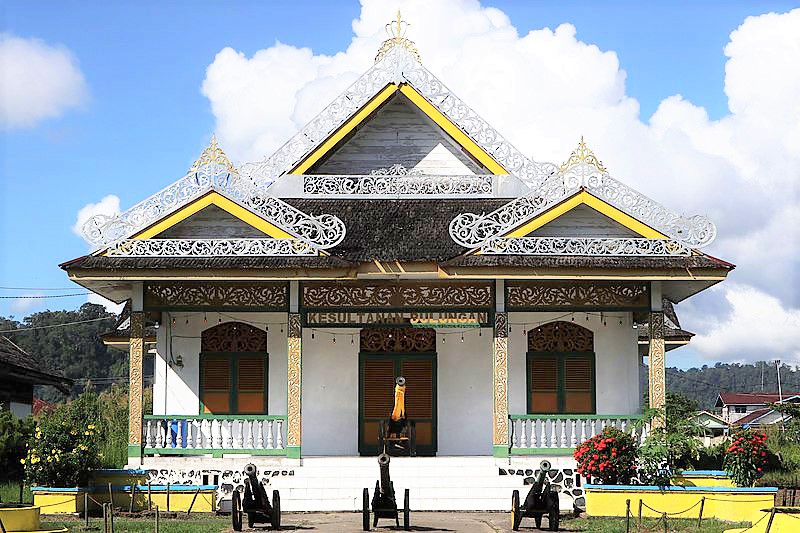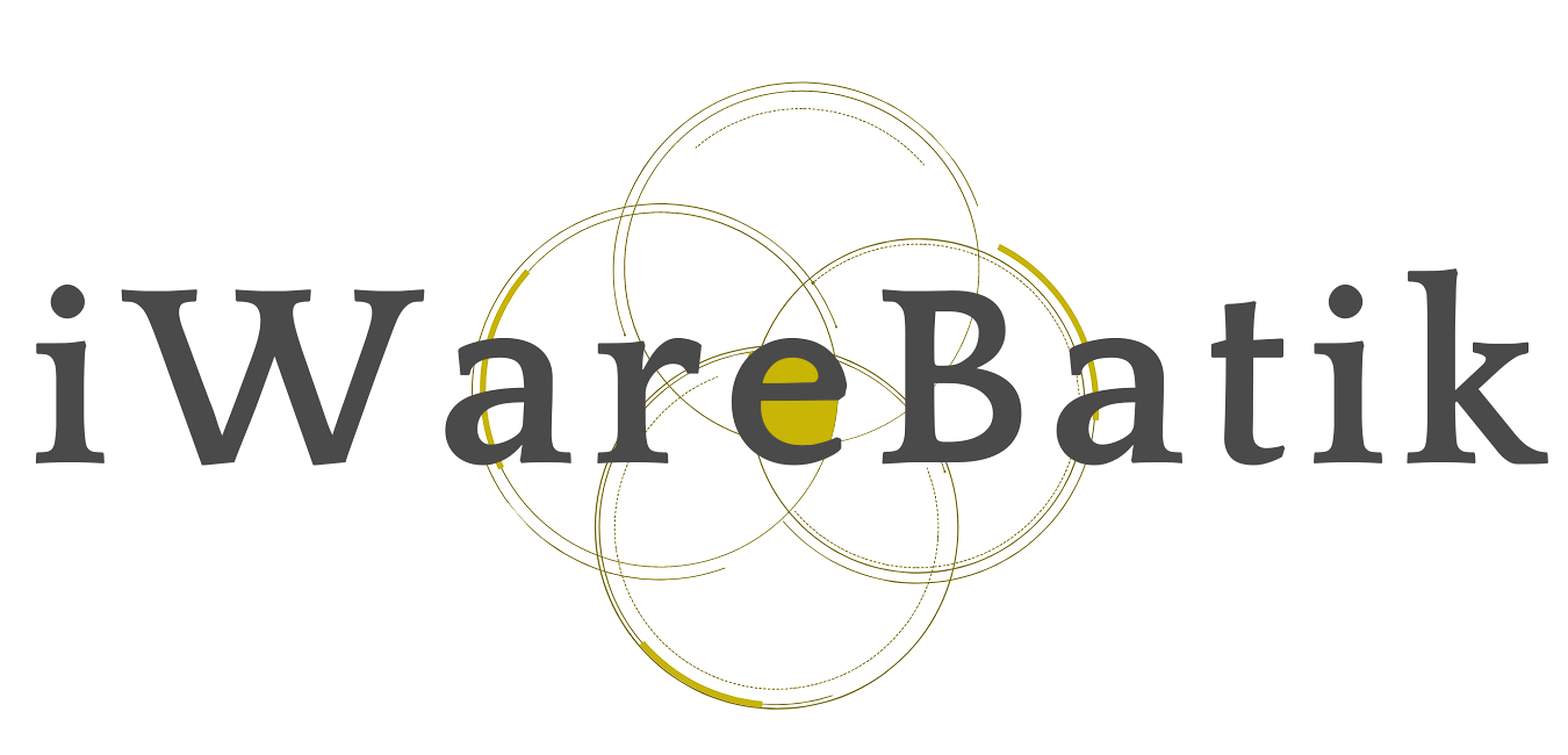Home / Batik Regions – Central Indonesia – Kalimantan Island – North Kalimantan / Museum of Bulungan Sultanate
Cultural Destination
Embrace the spirit of the place!
Museum of Bulungan Sultanate

Museum of Bulungan (foto: Indonesia.go.id)
Museum of Bulungan Sultanate
This historical museum is a witness of the legacy of the Bulungan Sultanate (1731-1958). It contains historical objects which reflect the glory and identity of the indigenous communities of Bulungan.
Tourist Attractions in North Kalimantan
Batik Villages in North Kalimantan
Home / Batik Regions - Central Indonesia - Kalimantan Island - North Kalimantan / Batik Villages in North Kalimantan Batik Village in North Kalimantansupport the local workshop Brief Story: Batik Bultiya is an acronym of Batik Bulungan, Tidung, and Dayak. This...
North Kalimantan
Batik Motifs
Bekantan Pakis
This motif represents Pakis Haji (Polystichum setiferum), an endemic plant in
Bultiya
The word ‘Bultiya’ is an acronym of the three major tribes in North Kalimantan, namely
Dayak Taghol
Dayak Taghol has a distinctive style of four curved lines and small dots. This motif represents
Discover
Indonesian
Batik
Motifs
Gurdo Solo
Gurdo or garuda bird is the mount of the Indian god Vishnu. As the Sun Bird,
Karawo Mahkuta
Mahkuta refers to Gorontalo’s traditional crown. It represents noble characters of
Lontara
The Lontara script itself is a typical ancient script of Bugis and Makassar communities. History records that
Bekantan Pakis
This motif represents Pakis Haji (Polystichum setiferum), an endemic plant in
Prada Papua
The word “Prada” in the Javanese-Indonesian dialect means a batik textile that
Gedhog Kembang Waluh
a combination of Javanese cultural motif of the Majapahit kingdom (XII-XIV century) with
Ake Patra
Ake is related to the divinity and the composition of the universe. It is a symbol of
Wirasat
Wirasat or divine inspiration is a gift from God. This inspiration is symbolized by
Kasih Tak Sampai
‘Kasih Tak Sampai’ is an idiom in the Indonesian language which refers to
Enggang Dayak
Local people beliefs that hornbills are an incarnation of the Commander of the Birds. It has supernatural
Daun Simpor
This motif is inspired by the Simpor plant (Dillenia Suffruticosa) which is a typical
Daun Lada Hitam
The black pepper motif represents the main commodity of Bangka Belitung
Tanah Liek
The word “Tanah Liek” refers to clay in Minang language. It is also known as
Bale Lumbu
This motif signifies the welfare of the ancient Sasak society. Bale also symbolizes the
Malinau Cultural Festival
You will witness a unique competition that might not be found other than in
Tifa Totobuang
The batik motifs illustrate Maluku’s traditional music instrument called
Srimanganti
The name of the Srimanganti motif is derived from Palace’s hallway that connects to
Burung Bidadari
Bidadari birds are endemic birds in Halmahera. This motif represents an
Pinawetengan
The Pinawetengan Batik pattern was taken from a prehistoric inscription in
Kawung
The Kawung motif was created by Sultan Agung Hanyokrokusumo (1593 – 1645) as a symbolic gift for
Sekar Jati
Sekar means flower and Jati refers to teak trees that symbolizes a strong mental character that
Tengkawang Ampiek
With its many advantages, the Dayaks use this leaf in ritual ceremonies. This plant is a symbol of
Teguh Bersatu
This batik motif shows the strength of the people of Kupang. It also represents a sense of
Tenun Bima
The motifs are adopted from Bima woven textile. This pattern has received a great
Gajah Way Kambas
The motif illustrates the Lampung’s natural reserve, the Way Kambas. it also symbolizes
Manguni Minahasa
Manguni is identified as the symbol of the Minahasa people. Manguni is known as a
Dayak Taghol
Dayak Taghol has a distinctive style of four curved lines and small dots. This motif represents
Pattimura
Pattimura is the name of an Indonesian hero who fought against colonialism in
Gumin Tambun
Based on Hindu mythology, this motif symbolizes lucks, abundant wealth, and
Paqbarre Allo
The word “Barre” means round and “Allo” means the sunlight. This motif is interpreted as
Parang Seling
Parang Seling or “alternating daggers” is a royal batik motif. It is a feminine variant of
Sido Mulyo
Sidomulyo is one of the classical motifs, which is specifically used for the bride’s costume in
Leuit Sijimat
This motif reflects the daily activities of the Baduy tribe in Banten. The main ornaments of batik motif consist of:
Jupri Kembang Teh
Kembang Teh illustrates the tendrils of tea plants that grow in the highlands of
Tongkonan
Toraja’s traditional house is called Tongkonan. Tongkonan is a place for
Cengkeh
The clove flower motif is the main commodity of the Tolitoli Regency. This motif represents
Kaharingan
The Kaharingan or ‘tree of life’ based on the Dayak tribes’ belief system. This tree symbolizes
Tampuk Manggis Sasirangan
The motif illustrates the philosophy of the mangosteen fruit, which is
Wakatobi
It symbolizes the coastal beauty of the Wakatobi island and the symbol of Patra symbolizes
Buketan Bali
The Balinese bouquet (Buketan Bali) is a floral arrangement and the name is
Keluak Daun Pakis
The word “Keluak” is a Minang language which means twisted or tangled. The Motif of
Kuda Kupang
Horses symbolize wealth. It contains noble values of virtuous characters that bring
Tikar Natuna
The Tikar Natuna motif is adapted from the traditional making of pandanus mats in
Gorga Simeol-Meol
The Gorga Simeol-meol is a pattern of plant tendrils. it is regarded as a symbol of longevity and
Raja Ampat
Raja Ampat motif represents the marine life at Raja Ampat archipelago in
Lok Baintan Floating Market
As you can imagine, the most authentic thing is that you can buy things and even
Gentala Arasy
Built as high as 80 meters, the tower also highlights the historical side of
Besurek Rafflesia
The term “Basurek” refers to a textile that contains letters or inscriptions
Bultiya
The word ‘Bultiya’ is an acronym of the three major tribes in North Kalimantan, namely
Gamolan
This motif illustrates Gamolan, a bamboo musical instrument of Lampung that is
Lipaq Sabe
Lipaq Saqbe contains a simple geometric classical motif with various flower decorations. This textile is
Biji Kopi
The coffee seeds motif illustrates the pride of local coffee specialities in
Bintik Tujuh
The Bintik Tujuh (Seven Dots) motif has 7 white spots and green color gradation as
Rumah Mamuju
the Batik motif illustrates the house of Mamuju King with the stairs, located on the left of the wooden stage house
Pohon Hayat (Tree of Life)
The Batik motifs in Lampung are dominated by the acculturation of Buddhist and
Gonggong Beruntun
This motif illustrates that a person should maintain a positive attitude and
Awan Berarak
Awan Berarak is a combination of Dayak motifs and Malay patterns. The word ‘Awan Berarak’ means the
Tubo Kelapa
Coconut tree is a symbol of a good character and strong mentality. It illustrates the more success a person, the more
Gigi Haruan Lidi
The Gigi Haruan Lidi motif is taken from the name of the cork fish and is a symbol of
Jumputan Bintang
The word Jumputan means the tie-dye technique, while the word “Bintang” refers to
Ikan tambal
The word “Ikan” refers to fish. The philosophical meaning of Ikan Tambal means is
Sandeq
Sandeq Boat is a symbol of the maritime importance of the West Sulawesi region. The greatness of
Ukir Sentani
The Ukir motif is a batik motif that is inspired by various traditional Sentani wood carvings
Taiganja
Taiganja is a precious gold pendant that shows the social status of the Kaili family. It is
Merak Ngeram
The hatching peacock motif has a very deep meaning which refers to the sacrifice and
Karawo Pinang
Pinang refers to the Palm areca tree. This motif is considered as the original
Angsa Duo
According to legend, the Angso duo batik motif is a pair of swans that are believed to have led Princess
Desa Na Tolu
The Desa Na Tolu characteristic pattern symbolizes the Batak philosophy of existence and
Kaganga Tanah Rejang
If Batik Besurek combines Arabic calligraphy motifs, then the Kaganga batik takes
Singayaksa
The Singayaksa motif comes from the name of a place where Sultan Hasanuddin used to
Dayak Kamang
Kamang motif is generally found in the Dayak tribe shield because it is believed to
Pucuk Rebung Riau
Pucuk Rebung symbolizes heart determination in achieving goals, good luck, and
Rangkiang
The word “Rangkiang” refers to the rice granary in the Minangkabau language. It symbolizes
